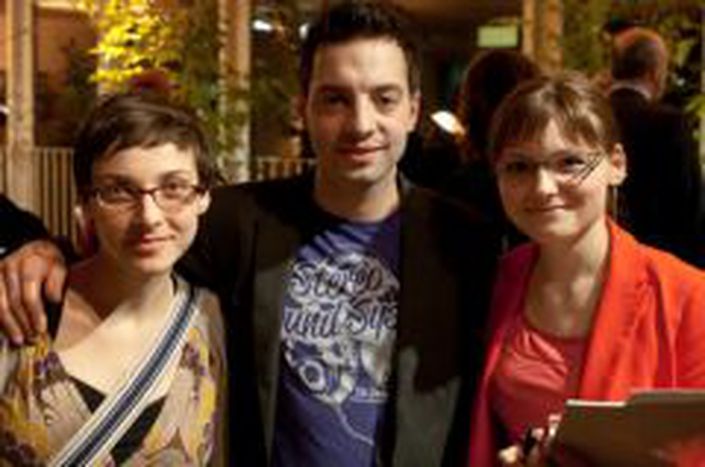
Power to the People! Theatre Stars Interact with the Citizens of Europe
Published on
By Lisa Kittel, translated by Danica Jorden “Theatre is for old people,” responds Fabrice Murgia to Cafebabel Brussels when asked how he views the role of young people in the theatre. “I want to make it young again,” he says, “meaning I want to bring a younger audience to the theatre. The theatre usually shows plays by dead people who don’t speak the language of today’s youth.
” According to Murgia, it’s time to give way to new stories and new ways of telling them. So more young creators? With budget cuts, it takes bravery to debut either onstage or behind the scenes these days. “It’s scary,” he sums up.
So the Vesco Project arrives just in time. It’s also the European project where, at the end of January, Fabrice Murgia presented his new play, Exile. Vesco – Villes en scène/Cities on Stage brings together citizens, artists, as well as youth to create an ensemble image of their city, a look into such things as what hides behind the walls of their houses, an abstract Metro map, crowded bars, a beggar in the street.
In “Exile,” the characters prove their metal when faced with the challenges of their lives. Loneliness, being engulfed by work, the progressive loss of our identity, all are reflected in the lifeless dummy a performer drags from one end of the stage to the other. Even the latent racism of the characters reflects the ignorance of a seemingly educated and civilised society. An impressive visual technique creates an ensemble composed of receding tableaux.
%%!!!% “Living Together”
From now until 2016, Vesco brings together six directors from six different countries, asking themselves how the city represents a microcosm of Europe today. The project is sponsored by the European Union. At the project’s inaugural party, Androulla Vassiliou, Commissioner for Education and Culture, mentions the crucial issues surrounding coexistence as the fundamental question posed by the works being created. She speaks about coexistence of the imagination and therefore in the theatre as a way to translate these ideas to daily life. That’s the reason why the essential exchange between the public and the artists must not be limited to one city. All the works travel throughout Europe, so that the questions posed are also heard in other countries and exposed to other viewpoints.
Citizens as the Actors of their Cities
The actors, among them Joël Pommerat and Frank Castorf, are not alone in this creative task. Each theatre, be it in Sibiu, Romania or Göteborg, Sweden, parallels each production with a contemporary artist and a group of citizens as the actors of their cities. Their works will travel throughout Europe (in the six cities of participating countries) along with the theatrical productions. In Brussels, photographers Gaël Turine, Loïc Delvaulx , Cédric Gerbehaye show the complex faces of a “multicultural Brussels” in their exhibit of black and white images at the national theatre. Additionally, adolescent groups can participate in the productions in their cities.
If you would also like to follow the project, stay informed about your national theatre’s programming over the coming years. Murgia, the first “nomad artist,” will preview his next works at the Teatrul National Radu Stanca in Sibiu at the end of May, and at the Teatro Stabile di Napoli at the beginning of June. There he’ll come in contact with another public, and who knows, maybe another young audience who may, alongside his own social, professional and creative point of view, inspire future works.



